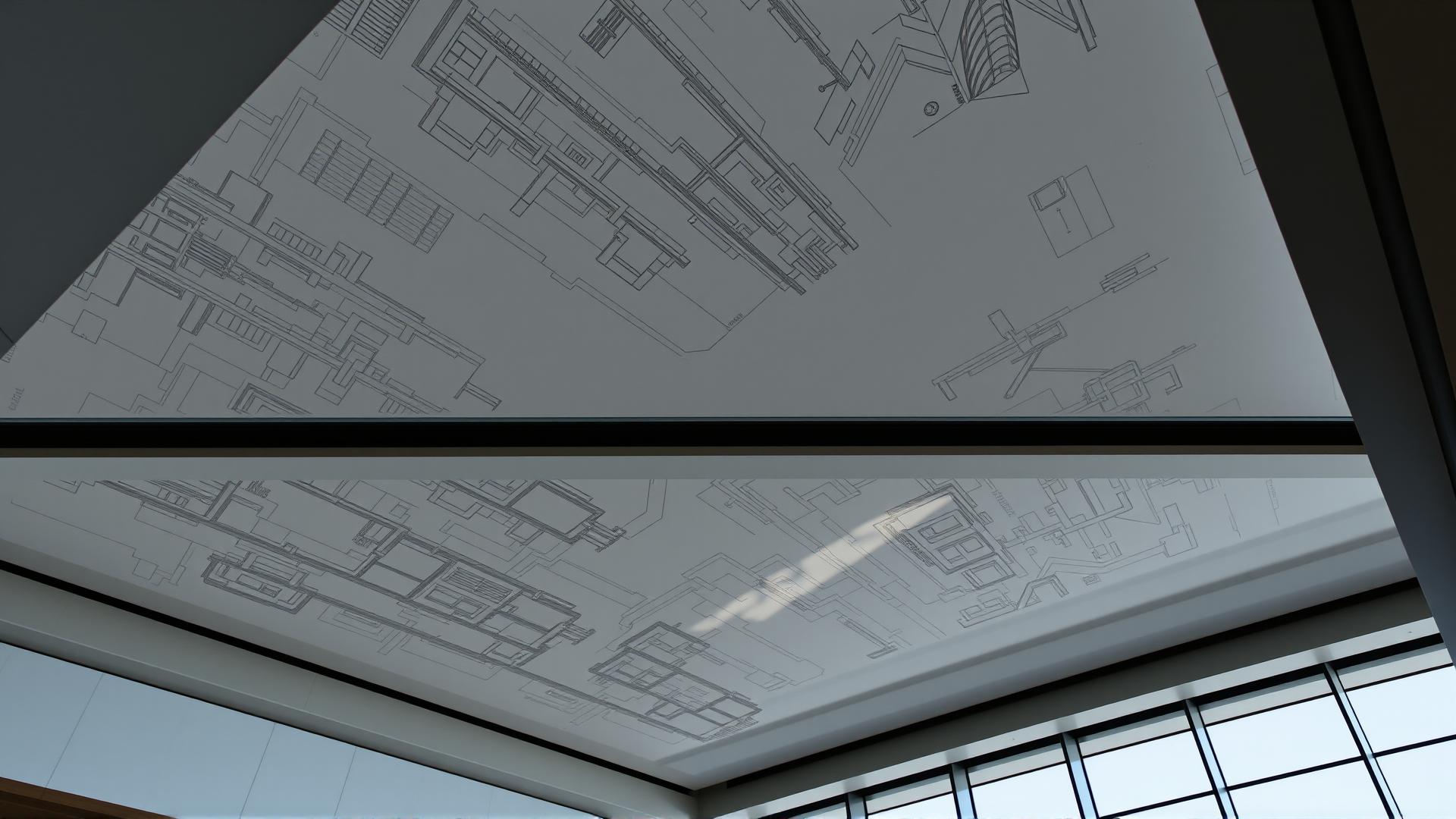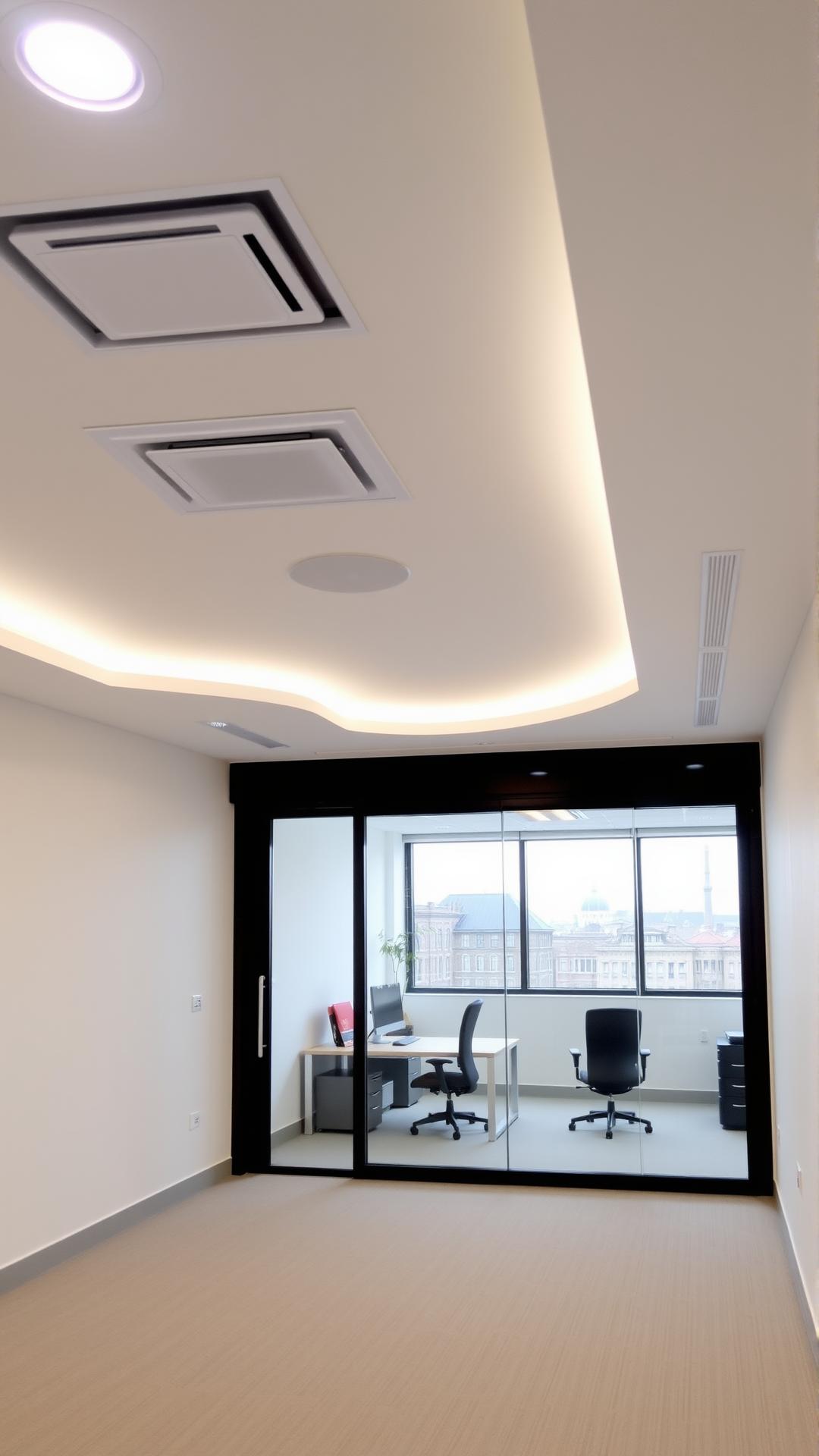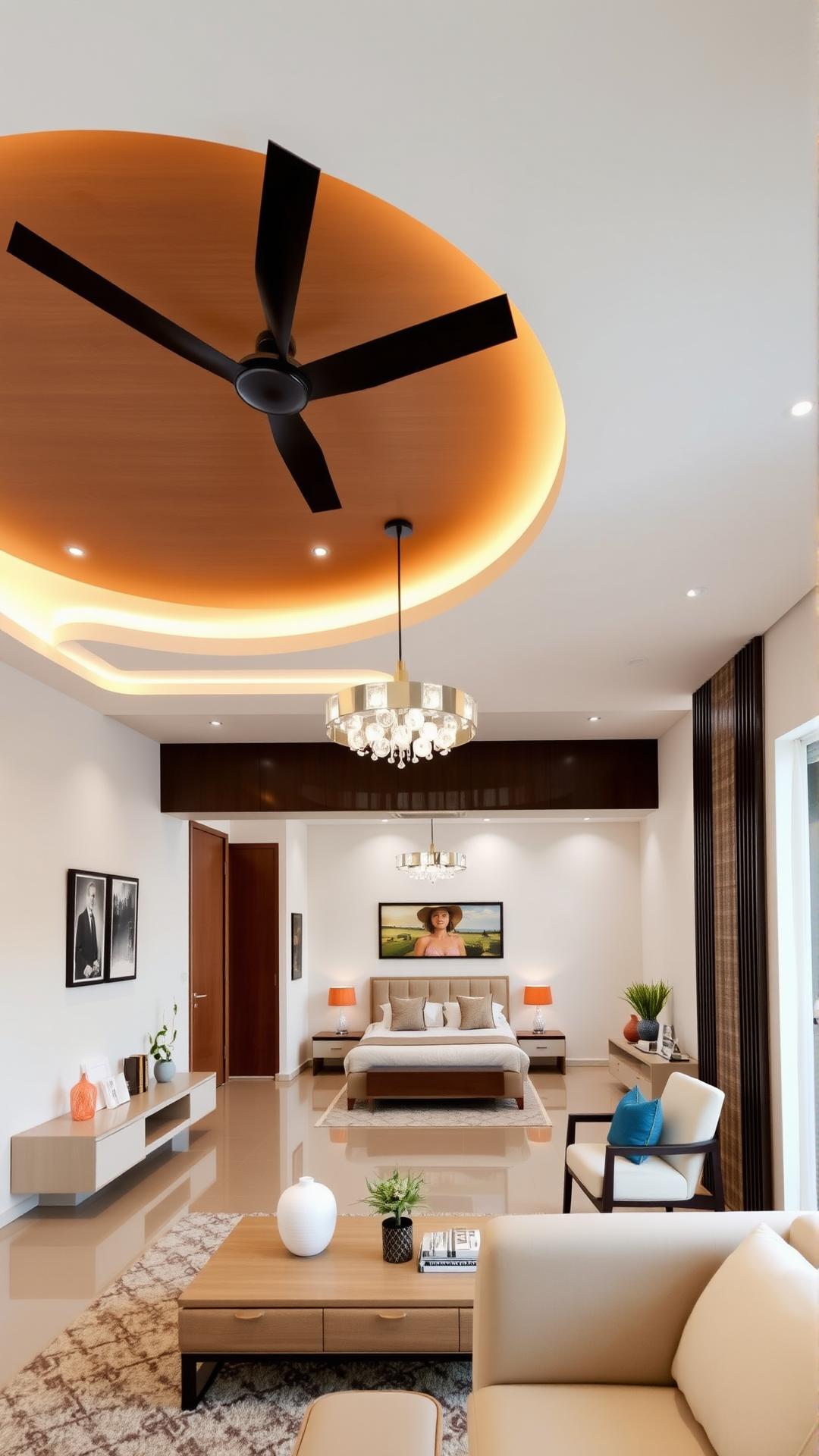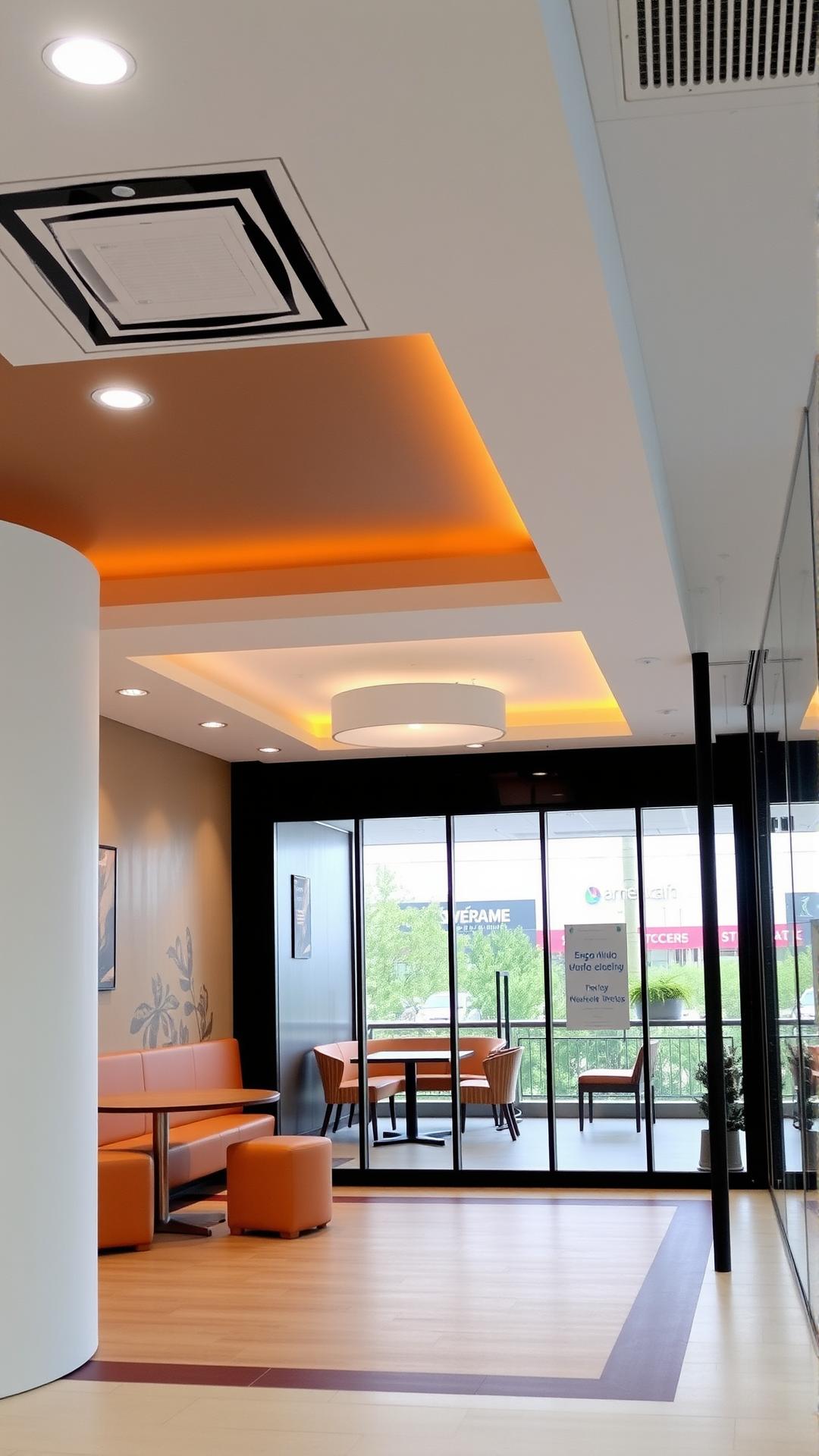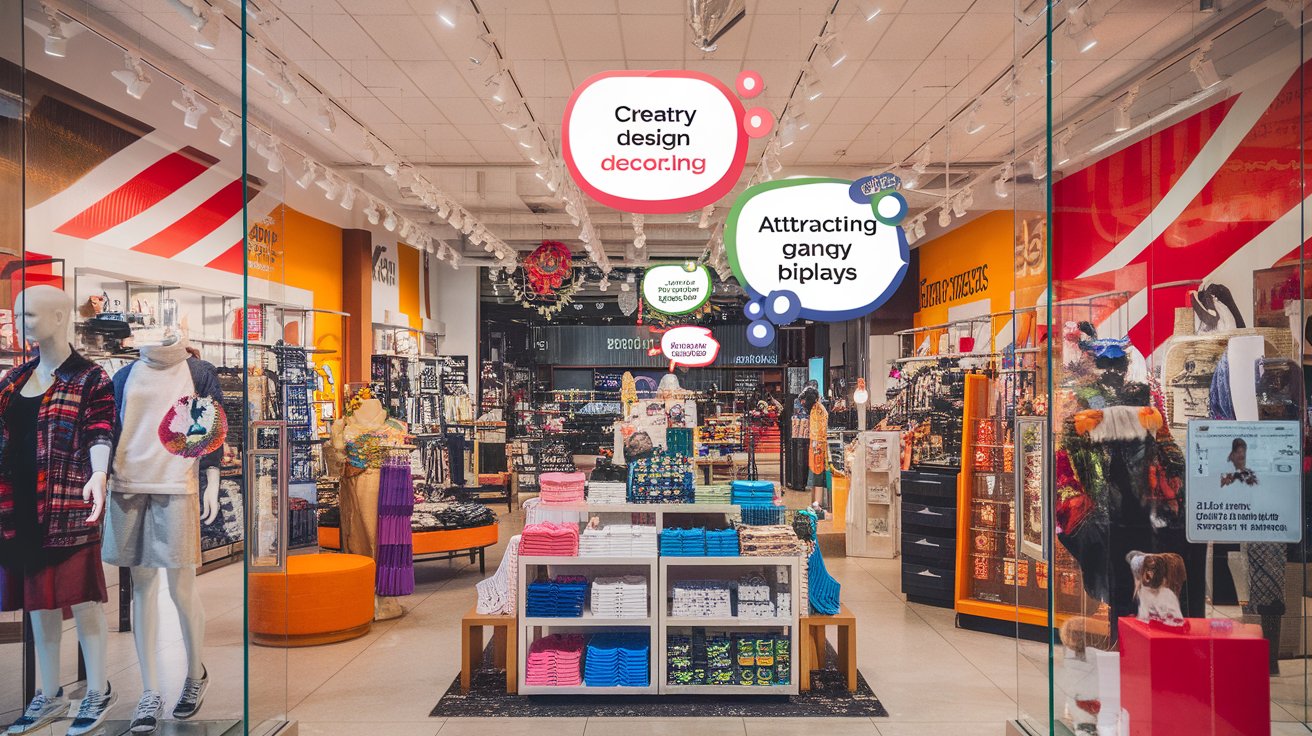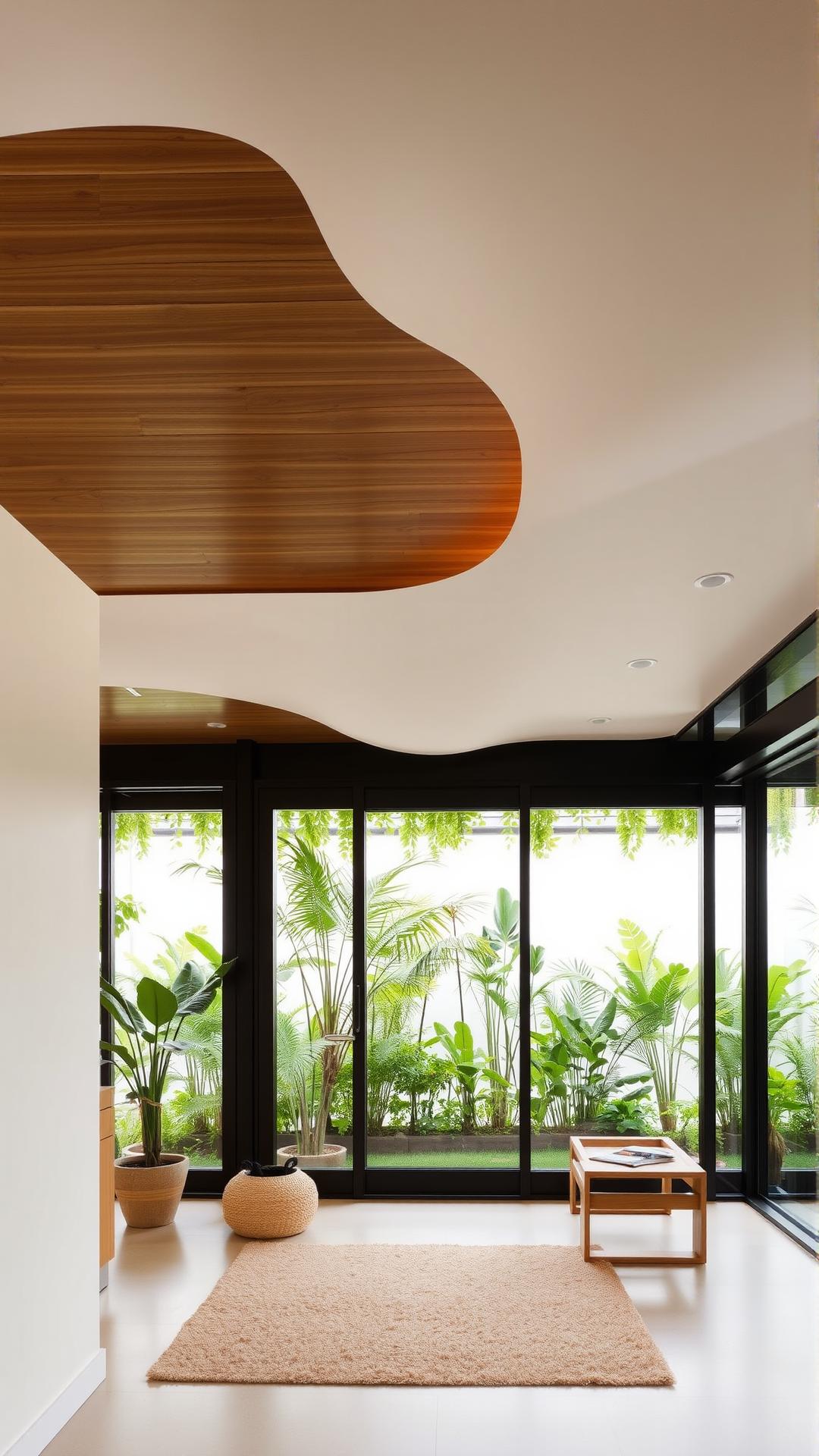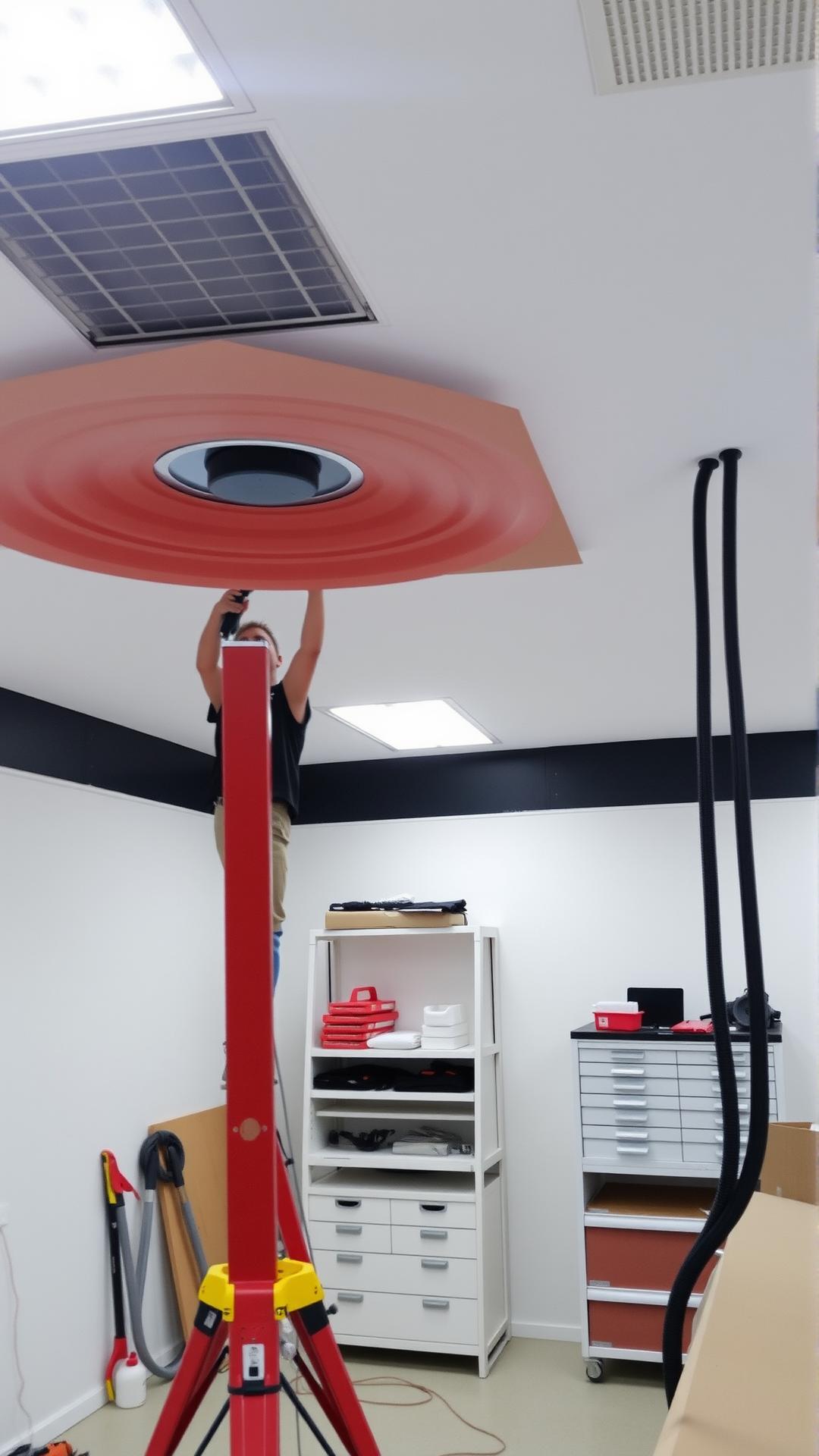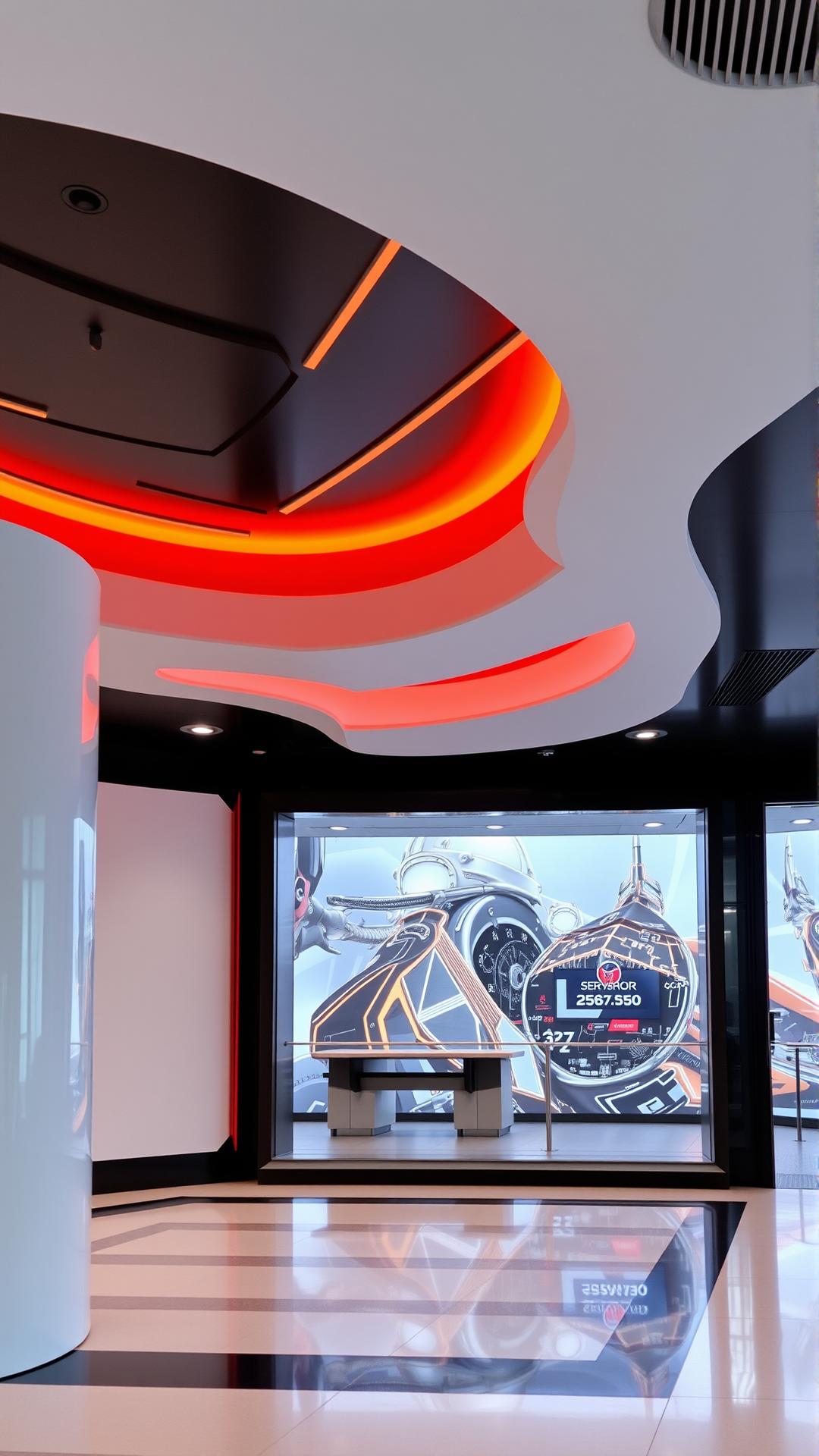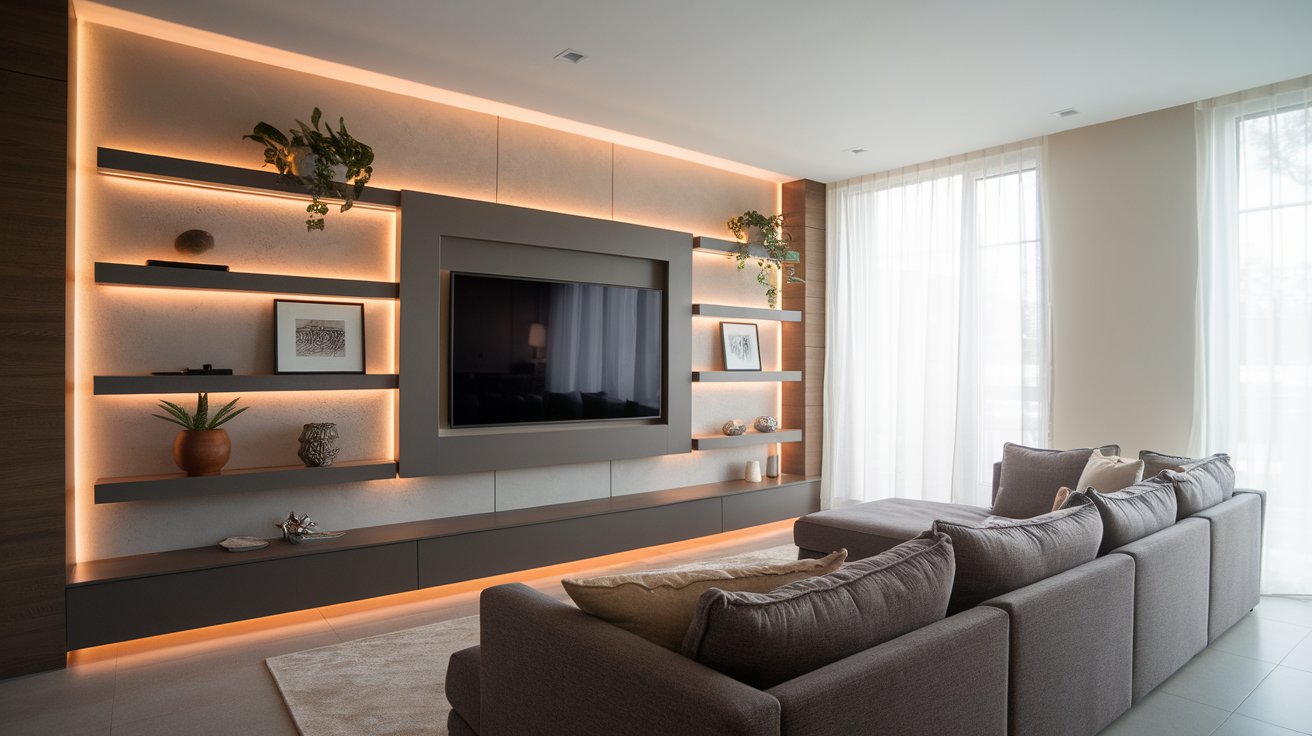Introduction
False ceilings have become a fundamental element in modern architectural design. These secondary ceilings not only offer aesthetic appeal but also play a significant role in improving the sound quality and thermal comfort of residential and commercial spaces. By lowering the height of the primary ceiling, false ceilings create a plenum for hiding utilities such as electrical wiring and HVAC ducts, thereby providing a clean and streamlined appearance.
The versatility of false ceiling design allows for a wide range of styles and materials, making them suitable for various environments. From minimalist designs to more elaborate features, this article will explore various false ceiling design ideas that can transform the look of any modern space. As we delve deeper, readers will discover how these innovative designs can enhance both functionality and aesthetics in interior design.
Understanding False Ceilings: An Insight into Modern Architectural Trends
The concept of false ceilings, also known as drop ceilings or suspended ceilings, refers to an additional layer installed beneath the main ceiling surface. This design innovation has a rich history, dating back to ancient civilizations that sought to create aesthetically pleasing interiors. Initially utilized for practical purposes, false ceilings evolved as decorative elements, becoming increasingly prominent in modern architecture.
These architectural features are available in a variety of materials, including gypsum board, mineral fiber, and metal. Each type offers distinct advantages, making it feasible to select a design that complements both functional requirements and aesthetic aspirations. For example, gypsum board ceilings are popular for their smooth finish and versatility, while metal ceilings are favored for their durability and contemporary appeal.
The primary functions of false ceilings in modern spaces extend beyond aesthetics. They contribute significantly to acoustic management by reducing noise levels within a room. The addition of sound-absorbing materials can enhance sound quality, creating a more pleasant environment for living or working. Furthermore, false ceilings play a pivotal role in concealing electrical wirings, plumbing, and HVAC systems, maintaining an uncluttered appearance that is essential in sleek, modern designs.
In terms of thermal insulation, false ceilings serve as an effective barrier. They help regulate indoor temperatures, making spaces more energy-efficient. An insulated false ceiling can significantly reduce the reliance on heating and cooling systems, leading to lower energy bills. Their function as a thermal buffer is particularly beneficial in regions experiencing extreme weather conditions.
As urban living continues to evolve, the demand for versatile and efficient spatial solutions has increased. False ceilings adapt to changing design trends, such as minimalism or biophilic design, by incorporating LED lighting, integrated sound systems, and green elements like vertical gardens. These innovations enhance visual interest while remaining functional and unobtrusive.
False ceilings represent a merging of practicality and style, reflecting contemporary architectural movements. Their ability to transform interiors and improve functionality makes them indispensable in modern spaces, offering endless design possibilities for homeowners and architects alike.
Functional Benefits of False Ceilings: Analyzing the Practical Advantages of Installing False Ceilings
False ceilings have emerged as a versatile design feature that transcends mere aesthetics, offering a variety of functional benefits that enhance modern interiors. One of the primary advantages of incorporating false ceilings lies in their ability to improve aesthetics. By providing a smoother, more refined surface, these ceilings can elegantly conceal unsightly electrical wiring, ductwork, and plumbing. This results in a polished look that contributes to an overall cohesive design, allowing homeowners and designers to create a desired ambiance while maintaining a visually pleasing atmosphere.
False ceilings also offer significant improvements in acoustics. Modern homes, particularly open-concept spaces, often deal with sound reverberation and echo, making conversations difficult and detracting from the comfort of the environment. Installing a false ceiling with acoustic panels can absorb sound, reducing noise pollution and enhancing speech intelligibility. This is especially beneficial in residential spaces like home theaters, music rooms, or any area where auditory comfort is essential. By strategically placing acoustical materials within the false ceiling framework, one can achieve an enjoyable auditory experience.
The environmental impact of false ceilings also deserves attention. These additions can contribute to energy efficiency by acting as an additional layer of insulation. When installed correctly, false ceilings can help regulate indoor temperatures, reduce reliance on heating or cooling systems, and ultimately lower energy costs. This is particularly vital in climates with extreme temperatures, where proper insulation leads to sustainable energy consumption and a reduced carbon footprint. By selecting eco-friendly materials, homeowners can further enhance the positive environmental impact of their design choices.
Another functional advantage is the flexibility that false ceilings provide in terms of lighting. These ceilings can accommodate various lighting solutions, including recessed lights, pendant fixtures, or indirect lighting. Incorporating different lighting designs not only helps in defining spaces but also allows for adaptability in mood and function. For instance, in a living room, ambient lighting can create a warm atmosphere for gatherings, while task lighting in a study nook can enhance productivity.
The installation of false ceilings brings forth numerous practical advantages. Enhanced aesthetics, improved acoustics, increased energy efficiency, and flexibility in lighting all contribute to a more functional and inviting modern space. Embracing these benefits allows homeowners to create environments that are not only visually stunning but also comfortable and sustainable.
Design Ideas for Residential Spaces: False Ceiling Design Concepts Tailored for Modern Interiors
Innovative False Ceiling Ideas for Living Rooms, Bedrooms, and Kitchens
Creating an inviting atmosphere in residential spaces often begins with the ceiling. A false ceiling can transform any room by adding depth, texture, and style. In contemporary designs, homeowners increasingly seek innovative ways to integrate false ceilings that serve both aesthetic and functional purposes.
In living rooms, a coffered false ceiling can add a sophisticated flair. This design features recessed squares or rectangles that create depth and break the monotony of flat ceilings. Incorporating recessed lighting within these squares can highlight artwork or architectural features, offering a modern touch while enhancing visibility. Another attractive option is the use of wooden slats arranged in geometric patterns, which brings warmth into the room. The natural textures of wood contrast beautifully with modern furnishings, striking a balance between tradition and modernity.
Turning to the bedroom, the ceiling design should evoke tranquility and relaxation. A popular idea is an indirect lighting setup where LED strips are hidden behind a false ceiling’s ledge. This design creates a soft, ambient glow, perfect for creating a calming environment. Another approach is the use of a fabric-wrapped ceiling, which can introduce color, texture, and a gentle sound-dampening effect. This makes it an ideal treatment, especially if the room’s decor leans towards a soft, comforting aesthetic.
In the kitchen, functionality and style must coincide. A false ceiling can be utilized to conceal ductwork or plumbing while allowing for clever design applications. The use of a drop ceiling with integrated lighting can enhance task areas, providing ample light for cooking and prep work. Open shelving modules integrated into the false ceiling can serve as both decoration and storage, offering a stylish way to display cookbooks and decorative dishes.
Combining multiple materials can also yield striking results in various residential settings. For example, blending metal and gypsum can create a unique contrast, showcasing modernity while maximizing durability. This versatility enables homeowners to design ceilings that truly reflect their personal tastes while providing practical benefits.
Commercial Applications of False Ceilings: A Modern Approach
Transforming Spaces in Offices, Retail, and Hospitality
False ceilings have emerged as a pivotal design element in modern commercial interiors, acting not just as a practical solution but also as a significant design feature. In office environments, false ceilings contribute to manipulating acoustics, enhancing sound insulation, and creating a conducive atmosphere for productivity. The integration of materials such as acoustic panels and fabric-covered tiles can effectively reduce noise levels, making open-plan offices feel more intimate and focused.
False ceilings serve to conceal essential infrastructure, such as electrical wiring, plumbing, and HVAC systems, thus presenting a cleaner and more organized aesthetic. In contemporary office design, the use of geometrical patterns and dynamic lighting fixtures can create a visually striking focal point. For example, a suspended ceiling featuring modular design allows businesses to emphasize their branding through customized elements that reflect their corporate identity.
In the retail sector, false ceilings can significantly enhance the shopping experience. Retail stores increasingly employ creative false ceiling designs to highlight merchandise and guide customers through a visually appealing space. Different ceiling heights and innovative materials, such as glass or metals, can be utilized to define areas within a store, such as checkout zones or featured displays. Strategic lighting integrated into false ceilings can draw attention to key products while simultaneously creating an inviting ambiance that encourages customer engagement.
The hospitality industry also benefits from the versatility of false ceilings. Hotels and restaurants use this design element to evoke a sense of luxury and comfort. Ornate plaster designs, backlit panels, or even greenery integrated into ceiling structures can transform an ordinary dining area into an extraordinary gastronomic venue. Additionally, the ability to adjust ceiling layouts based on themes or seasonal décor allows establishments to tailor experiences that cater to their clientele, enhancing the overall value proposition.
False ceilings play a crucial role in the design landscape of commercial spaces. From improving acoustics in offices to crafting distinctive environments in retail and hospitality, these innovative ceiling applications provide endless possibilities for enhancing aesthetics and functionality. This flexibility encourages businesses to think creatively and strategically, contributing to the overall success of their design initiatives.
Sustainable False Ceiling Design: Eco-Friendly Materials and Practices for Modern Interiors
As the design landscape increasingly shifts toward sustainability, false ceilings are emerging as key elements that not only enhance aesthetics but also contribute to eco-friendliness and energy efficiency. The integration of sustainable practices in false ceiling design can significantly reduce a building’s carbon footprint while improving indoor air quality and energy consumption. Using materials derived from renewable resources, recyclable components, and energy-efficient designs is essential for creating a modern and sustainable space.
Choosing Eco-Friendly Materials
When considering the materials for false ceilings, it’s essential to focus on options that are environmentally responsible. Here are several substrates that align well with eco-friendly practices:
- Reclaimed Wood: Utilizing reclaimed wood not only adds a rustic charm but also prevents deforestation and reduces waste.
- Recycled Metal: Metal ceilings can be made from recycled materials, which minimizes resource consumption and energy usage during production.
- Gypsum Boards: Many gypsum boards are produced with recycled materials and can be recycled themselves, making them a sustainable choice.
- Green Insulation: Incorporating insulation made from recycled denim or cellulose further enhances the energy efficiency of false ceilings.
Innovative Design Approaches
The design of a false ceiling can be enhanced not only with the choice of materials but also through innovative techniques that focus on sustainability. Some approaches include:
- Integrated Lighting Solutions: Enhanced energy-efficient LED lighting can be seamlessly integrated into false ceilings, reducing overall energy consumption while adding to the ambiance.
- Acoustic Tiles: Utilizing acoustic tiles that are made from recyclable materials can contribute to both sound quality and sustainability in office or residential spaces.
- Modular Systems: These allow for flexibility and adaptability, enabling the reuse of materials during renovations or updates.
Designing a sustainable false ceiling not only meets modern aesthetic standards but also prioritizes the health of the planet. These eco-friendly choices not only enhance indoor spaces but also resonate with an increasing consumer demand for environmentally conscious designs, paving the way for a truly modern approach to interior design. As we observe the evolving trend toward sustainability, integrating these ideas can lead to exceptional interiors that align with both style and responsibility.
Installation and Maintenance of False Ceilings: A Modern Approach
Step-by-Step Installation Process
The installation of false ceilings requires careful planning and execution to ensure a flawless finish in modern interior spaces. Begin by assessing the space to determine the design and materials that best fit the aesthetic and functional needs of the area. Accurate measurements are critical; mark the desired height and outline the arrangement for support frames and panels. Popular materials include gypsum board, PVC, and mineral fiber, each offering unique properties suited for different environments.
Once the layout is confirmed, the next step is to install the support framework. This typically involves anchoring metal channels to the existing ceiling, ensuring they are leveled correctly. After the framework is in place, the panels can be fitted. For gypsum boards, use screws to attach the panels firmly to the framework, while PVC panels can be clipped or glued. It’s essential to leave small gaps between the panels and wall edges to allow for expansion. Use joint compound to finish the seams for a smooth appearance, followed by sanding and painting if necessary.
Best Practices for Maintenance
If a panel is damaged, replacing it is usually straightforward, particularly with modular systems. Always ensure to select the same material and finish for the replacement to maintain aesthetic coherence. In areas prone to moisture, such as kitchens and bathrooms, consider using moisture-resistant materials to prevent deterioration.
Another key maintenance tip involves monitoring the lighting fixtures installed in the false ceiling. Ensure that any embedded lights are functioning correctly, and replace bulbs as needed. Consider energy-efficient options, such as LED, which not only save energy but also reduce heat output, further protecting the integrity of the ceiling.
Effective installation and regular maintenance of false ceilings not only enhance the aesthetic appeal of modern spaces but also prolong their lifespan, contributing to a more sustainable and attractive interior environment.
Emerging Trends in False Ceiling Design: Innovative Approaches to Enhance Interiors
Revolutionizing Spaces with Cutting-Edge Materials and Technology
The landscape of false ceiling design is undergoing a transformation fueled by emerging trends that focus on innovation and creativity. As interiors strive to embrace smarter, more aesthetically pleasing experiences, modern false ceilings are being reimagined with an arsenal of new materials and technologies. One of the most significant trends is the adoption of eco-friendly materials such as reclaimed wood, bamboo, and recycled composites, which not only enhance the aesthetics but also align with sustainable living practices. These materials bring warmth and character while minimizing environmental impacts, catering to a growing demographic that prioritizes sustainability.
Incorporating advanced lighting and sound-absorbing technologies into false ceiling designs is another burgeoning trend. LED strip lights integrated into ceiling features create immersive ambiances and can be configured for various moods. Acoustic panels integrated within the ceiling structure enhance sound quality, making spaces like home theaters or conference rooms more efficient. This fusion of functionality and style elevates the user experience, ensuring that the false ceiling not only serves as a design element but also enhances the performance of the space.
Bold Aesthetics and Structural Flexibility
Another prominent trend involves the use of geometric patterns and dynamic shapes in false ceiling layouts. Designers are increasingly favoring asymmetrical designs and intricate layers that add depth and visual interest, transforming standard ceilings into statement pieces. The focus on customized solutions allows architects and designers to create unique patterns that reflect the personality of the space.
Flexible configurations and modular designs have gained popularity, enabling homeowners and businesses to adapt their interiors with minimal effort. Modular systems can be easily installed or reconfigured to accommodate changing needs, making them perfect for spaces like co-working offices or retail environments. This adaptability ensures that the design evolves alongside the occupants’ requirements, embracing a more fluid approach to interior aesthetics.
Integrating smart technology into false ceilings adds an innovative layer of convenience. The incorporation of smart home systems means that lighting, climate control, and ambiance can be managed seamlessly from a mobile device or voice-controlled assistant. This integration elevates the living or working experience, propelling false ceilings beyond mere design elements into functional, tech-enhanced solutions tailored to modern lifestyles.
Conclusions
The integration of false ceilings in modern design continues to grow in popularity due to their functional and aesthetic benefits. The innovative ideas discussed in this article showcase the variety of options available, from traditional grid systems to strikingly artistic designs. By carefully selecting materials, styles, and lighting, designers can create unique atmospheres tailored to individual preferences.
False ceilings are more than just a decorative feature; they contribute to sound absorption, energy efficiency, and space optimization. Whether for a home, office, or commercial environment, understanding the possibilities of false ceiling design can lead to remarkable transformations, making them a worthy consideration for any modern interior project.

